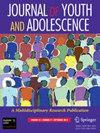同理心预测欺凌,还是欺凌预测同理心?纵向研究的荟萃分析。
IF 3.6
1区 心理学
Q1 PSYCHOLOGY, DEVELOPMENTAL
引用次数: 0
摘要
尽管人们普遍认识到移情与儿童和青少年中的欺凌行为有关,但对于他们之间关系的纵向、双向性质,以及可能缓和这些联系的人口统计学和方法学因素,仍然严重缺乏共识。本研究对现有的纵向证据进行meta分析,探讨共情与欺凌行为/受害之间的双向关系,并考察人口统计学和设计因素的调节作用,以确定研究异质性的来源。通过检索4个全球数据库和4个中国数据库,进行标题/摘要筛选和纳入/排除标准的应用,本meta分析纳入23项研究,共21296名受试者(52.6%为女性;法师= 13.2年)。结果表明,共情对随后的欺凌行为负向预测,欺凌行为负向预测随后的共情。然而,研究结果既不能证明共情对欺凌受害的预测作用,也不能证明欺凌受害对共情的预测作用。进一步的分析表明,早期的欺凌受害经历和随后的同理心水平之间的关系在女性中表现出更大的效应量。相较于较长的时间滞后,移情对欺凌受害的预测作用在较短的时间滞后中更强。当使用基本共情量表测量共情时,发现早期欺凌行为与后期共情之间存在较强的相关性。总体而言,这些研究结果阐明了移情与欺凌行为之间具体的相互作用过程,并说明了考虑人口统计学和方法学因素的重要性,从而指导了青少年欺凌领域更有针对性的研究和干预措施。本文章由计算机程序翻译,如有差异,请以英文原文为准。
Does Empathy Predict Bullying, or Does Bullying Predict Empathy? A Meta-Analysis of Longitudinal Studies.
Despite widespread recognition that empathy is implicated in bullying among children and adolescents, there remains a critical lack of consensus on the longitudinal, bidirectional nature of their relationship, as well as the demographic and methodological factors that may moderate these associations. This study conducted a meta-analysis of existing longitudinal evidence to explore the bidirectional relationships between empathy and bullying perpetration/victimization and investigate the moderation effects of demographic and design factors to identify sources of study heterogeneity. Through searches of four global databases and four Chinese databases, followed by title/abstract screening and application of inclusion/exclusion criteria, the present meta-analysis included 23 studies with a total of 21296 participants (52.6% female; Mage = 13.2 years). Results indicated that empathy negatively predicted subsequent bullying perpetration, and bullying perpetration negatively predicted subsequent empathy. However, results failed to demonstrate either the predictive effect of empathy on bullying victimization or that of bullying victimization on empathy. Further analysis showed that the relationship between earlier experiences of bullying victimization and subsequent levels of empathy demonstrated a greater effect size in females. Compared to longer time lags, the predictive effect of empathy on bullying victimization was stronger in shorter time lags. A stronger correlation was found between earlier bullying perpetration and later empathy when using the Basic Empathy Scale to measure empathy. Overall, these findings clarify the specific reciprocal processes between empathy and bullying perpetration and illustrate the importance of accounting for demographic and methodological factors, thus guiding more targeted research and interventions in the field of bullying among youth.
求助全文
通过发布文献求助,成功后即可免费获取论文全文。
去求助
来源期刊

Journal of Youth and Adolescence
PSYCHOLOGY, DEVELOPMENTAL-
CiteScore
8.20
自引率
6.10%
发文量
155
期刊介绍:
Journal of Youth and Adolescence provides a single, high-level medium of communication for psychologists, psychiatrists, biologists, criminologists, educators, and researchers in many other allied disciplines who address the subject of youth and adolescence. The journal publishes quantitative analyses, theoretical papers, and comprehensive review articles. The journal especially welcomes empirically rigorous papers that take policy implications seriously. Research need not have been designed to address policy needs, but manuscripts must address implications for the manner society formally (e.g., through laws, policies or regulations) or informally (e.g., through parents, peers, and social institutions) responds to the period of youth and adolescence.
 求助内容:
求助内容: 应助结果提醒方式:
应助结果提醒方式:


